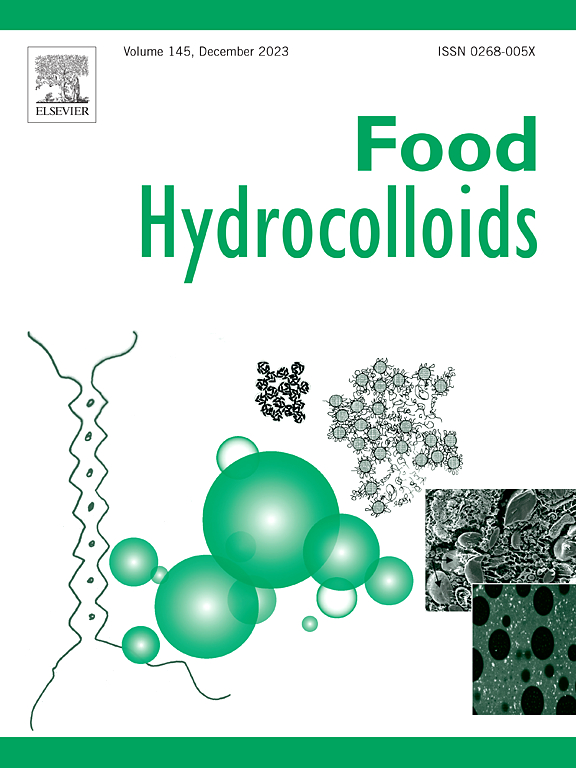High temperature 1H DOSY NMR reveals sourdough fermentation of wheat flour alters the molecular structure of water-extractable arabinoxylans
IF 11
1区 农林科学
Q1 CHEMISTRY, APPLIED
引用次数: 0
Abstract
Arabinoxylans are constituents of wheat flour that contribute to the dietary fiber properties of wheat. They exist in water-extractable and water-unextractable forms and contribute to human health. In bakery technology, especially the water-extractable arabinoxylans (WE-AX) are important due to their impact on viscosity and dough rheology. This study provides insights into the impact of wheat flour fermentation on WE-AX during sourdough production, offering potential applications for improving sourdough bread quality and its health benefits. The production of sourdoughs is known to increase the WE-AX fraction, yet the underlying (bio)chemical mechanisms remain unclear. This study investigated the alteration of WE-AX during the fermentation of wheat flour for sourdough production using 1H Diffusion Ordered SpectroscopY (DOSY) Nuclear Magnetic Resonance (NMR) at elevated temperature to analyze the structural changes of WE-AX during wheat flour fermentation for sourdough production with different lactic acid bacteria (LAB) strains. The results confirmed that DOSY NMR at elevated temperatures greatly improved the applicability of the method for analyzing larger biomolecules. Overall, a size reduction of the WE-AX compounds with increasing fermentation time was found. This was indicated both by the occurrence of higher self-diffusion coefficients, and increased transverse relaxation times. Further research is necessary to explain deviations from the general trend.

求助全文
约1分钟内获得全文
求助全文
来源期刊

Food Hydrocolloids
工程技术-食品科技
CiteScore
19.90
自引率
14.00%
发文量
871
审稿时长
37 days
期刊介绍:
Food Hydrocolloids publishes original and innovative research focused on the characterization, functional properties, and applications of hydrocolloid materials used in food products. These hydrocolloids, defined as polysaccharides and proteins of commercial importance, are added to control aspects such as texture, stability, rheology, and sensory properties. The research's primary emphasis should be on the hydrocolloids themselves, with thorough descriptions of their source, nature, and physicochemical characteristics. Manuscripts are expected to clearly outline specific aims and objectives, include a fundamental discussion of research findings at the molecular level, and address the significance of the results. Studies on hydrocolloids in complex formulations should concentrate on their overall properties and mechanisms of action, while simple formulation development studies may not be considered for publication.
The main areas of interest are:
-Chemical and physicochemical characterisation
Thermal properties including glass transitions and conformational changes-
Rheological properties including viscosity, viscoelastic properties and gelation behaviour-
The influence on organoleptic properties-
Interfacial properties including stabilisation of dispersions, emulsions and foams-
Film forming properties with application to edible films and active packaging-
Encapsulation and controlled release of active compounds-
The influence on health including their role as dietary fibre-
Manipulation of hydrocolloid structure and functionality through chemical, biochemical and physical processes-
New hydrocolloids and hydrocolloid sources of commercial potential.
The Journal also publishes Review articles that provide an overview of the latest developments in topics of specific interest to researchers in this field of activity.
 求助内容:
求助内容: 应助结果提醒方式:
应助结果提醒方式:


